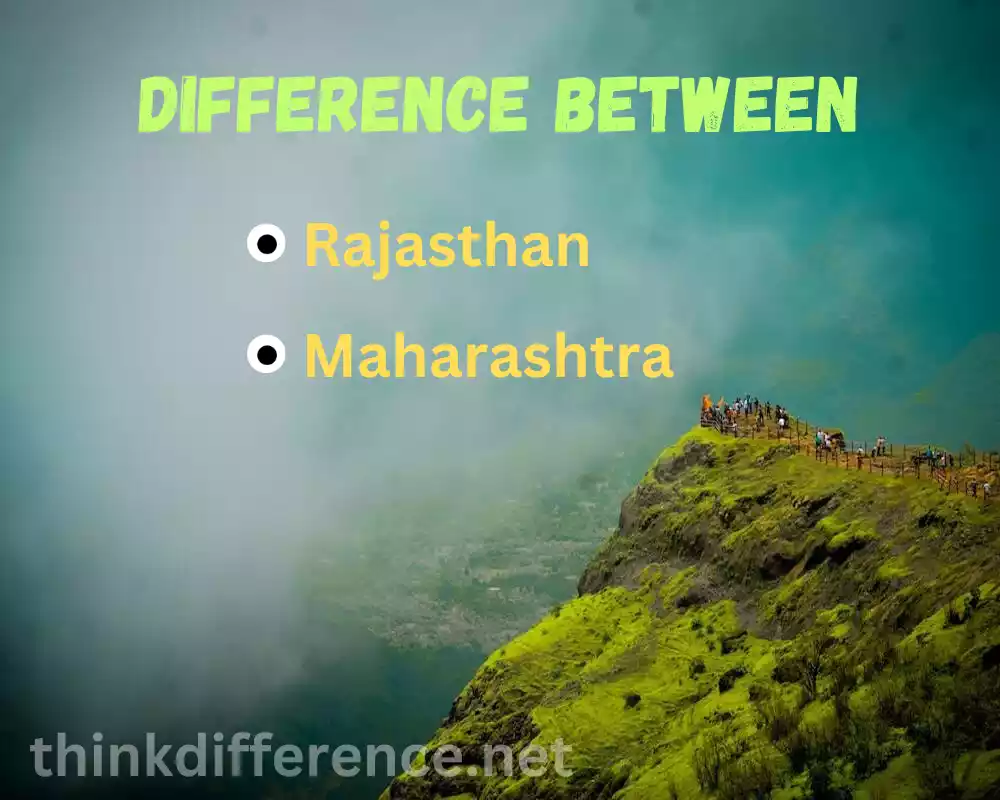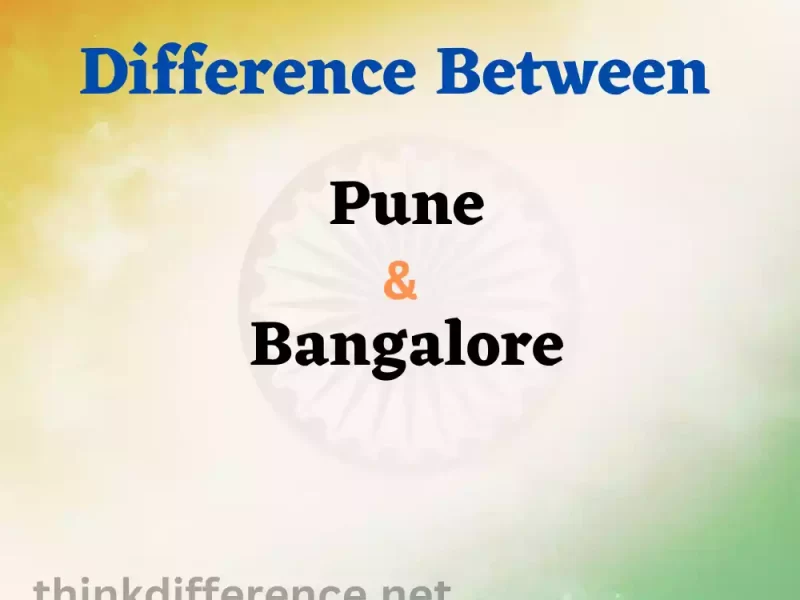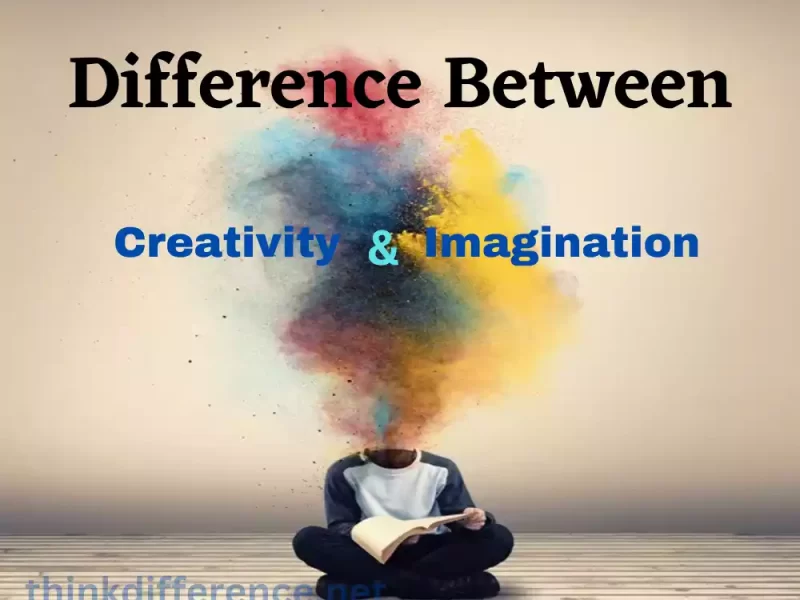Rajasthan and Maharashtra hold a special place in India’s cultural and historical narrative. These states offer a captivating blend of tradition, architecture, natural wonders, and mouthwatering cuisine. Understanding their geographical and historical significance allows us to appreciate the treasures they hold.
Brief overview of Rajasthan
In India’s northwestern region, Rajasthan is the state with the most people. Covering 342,239 sq km it shares borders with Pakistan to the west, Gujarat to its southwest, Madhya Pradesh to its southeast, Uttar Pradesh to its northeast as well as Haryana with Delhi towards its northwest corner.
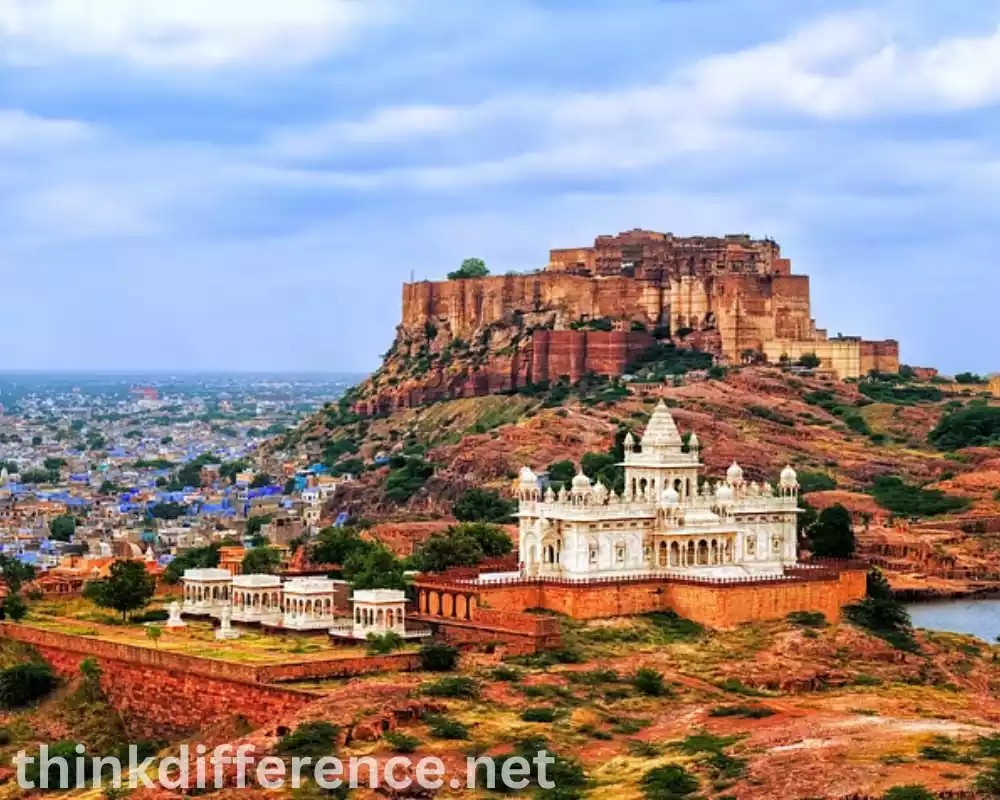
Rajasthan is famous for its desert landscape and the Thar Desert which covers much of its territory, which forms life and culture there. These elements play an integral part of its vibrant Rajasthani culture which encompasses traditional music, Ghoomar dance forms as well as lehengas with vibrantly rich traditions of crafts and arts that thrive there.
Rajasthan’s history is distinguished by numerous Rajput kingdoms with distinct identities and contributions, such as Mewar, Marwar and Jaipur which created stunning palaces, forts and havelis which remain architectural marvels and popular tourist spots today. This state saw influence from Mughals before coming under British colonial control and witnessing British imperial influence first hand.
Rajasthan relies heavily on agriculture for revenue generation, with animal cultivation being one of the major occupations for many residents. Handicrafts such as pottery, textiles jewelry leatherwork and pottery are popular throughout Rajasthan as is tourism which draws millions of tourists each year to discover royal culture and participate in vibrant festivals like Pushkar Fair & Desert Festival or explore wildlife parks like Ranthambore National Park – two important economic drivers.
Rajasthan is home to several important cities, with Jaipur as its capital and well-known “Pink City,” Udaipur being known for its palaces and lakes; Jaisalmer being famous for its gorgeous desert fort; Jodhpur being known as “Blue City,” for the blue-painted homes throughout. Rajasthan offers rich cultural heritage which leaves an impressionful lasting memory upon visitors who arrive.
Brief overview of Maharashtra
Maharashtra, located in western India, has the second-highest population density and covers an area of 307,713 square kilometres. Situated along its borders are Gujarat and Madhya Pradesh to its west; Chhattisgarh to its east; Telangana in its southeast corner; Karnataka on its southwest corner as well as Goa at its southern side.
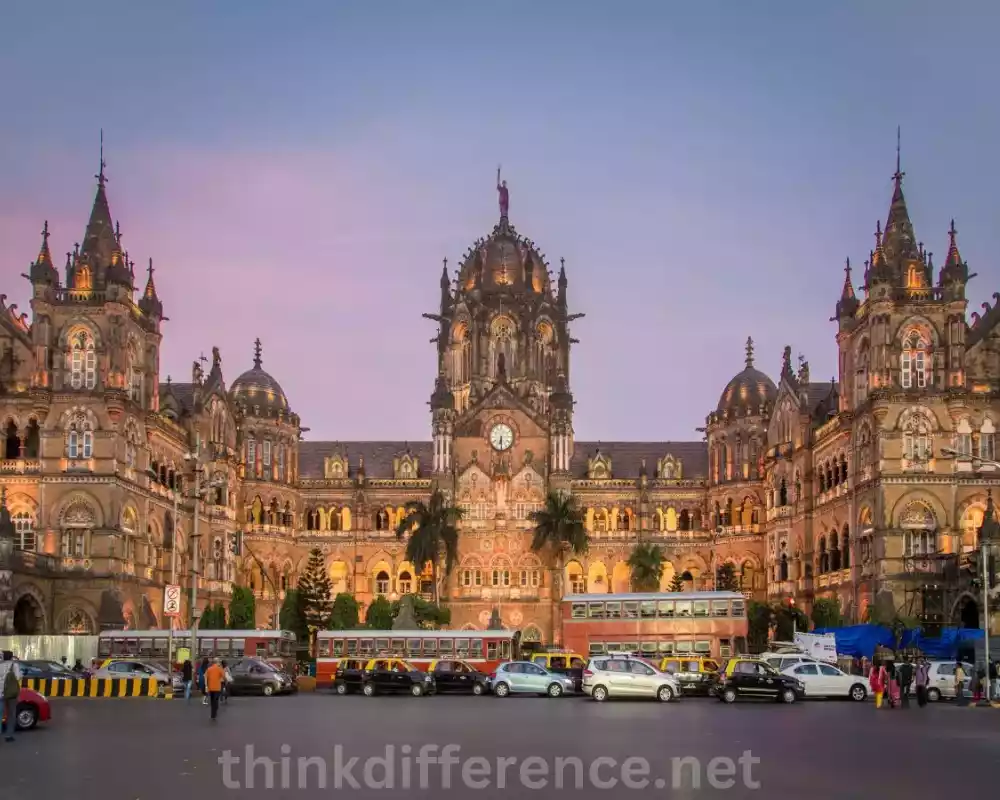
Mumbai, Maharashtra’s largest and capital city, serves as India’s main commercial, financial and entertainment capital. Maharashtra features varied topography spanning the Sahyadri mountain range within western Ghats and fertile plains of Deccan Plateau. These two features contribute to diverse climate zones that span subtropical, tropical and desert climate zones alike in its sprawling terrain.
Maharashtra has an expansive cultural and historical legacy. Once home to Mauryan and Satavahana empires, and then later the Maratha Empire led by legendary figures like Shivaji Maharaj – as well as Mughals and British Colonial rule – Maharashtra remains home for an abundance of historic landmarks that hold immense cultural and artistic value today.
Maharashtra architecture is famously recognized for its cave temples, such as those found at Ajanta and Ellora Caves – two World Heritage Sites recognized by UNESCO – featuring intricate rock sculptures dating back centuries, paintings made out of rock surfaces dating to long ago, colonial-era designs like Mumbai’s Gateway of India or Pune’s Victoria Terminus that showcase this culture of Maharashtra architecture.
Maharashtra is an eclectic state brimming with diverse languages and cultures. Though Marathi is officially its state language, other dialects such as Hindi, Gujarati and Konkani can also be heard spoken here. Various events throughout the year such as Ganesh Chaturthi, Diwali and Holi are celebrated here with great gusto!
Maharashtra boasts one of India’s most stable economic systems. This state is widely known for its agricultural landscape that features cotton, sugarcane and soybean crops; as well as for having an impressive industrial base including textile manufacturing cars manufacturing automobiles as well as information technology companies headquartered there. Mumbai often refers to itself as “The Financial Capital of India,” home of many national and multinational firms as their headquarters are found here.
Alongside Mumbai, other key cities of Maharashtra include Pune – known as “Oxford of the East” due to its schools; Nagpur as a logistics and commercial hub as well as Aurangabad known for historic sites such as Ellora caves and Ajanta caves.
Maharashtra is home to numerous natural wonders, from its breathtaking Western Ghats–recognized as an UNESCO World Heritage Site–to stunning coastal regions along the Konkan coast hills like Mahabaleshwar and wildlife preserve areas like Tadoba Andhari Tiger Reserve.
Maharashtra offers an exciting blend of culture, history, economic significance and natural beauty that draws tourists from around the globe.
Importance of Rajasthan and Maharashtra
Rajasthan and Maharashtra play an essential part in India’s historical, cultural, political and economic life. Here are several points which highlight their significance:
Rajasthan:
- Rich Cultural Heritage: Rajasthan is often considered the epitome of Indian culture and traditions. The state’s vibrant folk music, dance forms, handicrafts and festivals, such as Pushkar Fair and Desert Festival, attract tourists from around the world.
- Architectural Splendors: Rajasthan is renowned for its impressive forts, palaces and havelis. The architectural marvels like Amber Fort, Mehrangarh Fort and Umaid Bhawan Palace showcase the grandeur and artistic excellence of the Rajput era.
- Tourism Hub: Rajasthan’s diverse attractions, including historical sites, desert landscapes, wildlife sanctuaries and cultural experiences, make it a popular tourist destination. Tourism plays an essential part in driving economic development and job creation in any state.
- Mineral Resources: Rajasthan boasts abundant mineral resources including limestone, gypsum, marble granite and lignite. The mining industry contributes to the state’s economy and provides employment opportunities.
Maharashtra:
- Economic Powerhouse: Maharashtra is one of India’s most economically significant states. Mumbai, known as India’s financial capital, plays a pivotal role in contributing to India’s economy via trade, finance and commerce. The state’s industrial and manufacturing sectors, IT parks and agricultural production are major contributors to its economic strength.
- Educational and Cultural Center: Maharashtra houses prestigious educational institutions, including universities, research institutes and engineering colleges. Pune, often called the “Oxford of the East,” is a renowned educational hub in India. Culture diversity reflected by theater, literature, music and film industries enriches national culture.
- Agricultural Powerhouse: Maharashtra is known for its agricultural productivity and diverse agricultural activities. Sugarcane, soybeans, cotton as well as fruits and vegetables are key producers in Karnataka state – essential elements in providing India’s food security while contributing significantly to export sales of its agricultural sector.
- Gateway to Western India: Maharashtra serves as India’s main entryway into international commerce and trade. Major ports like Mumbai Port and Jawaharlal Nehru Port Trust (JNPT) help facilitate trade as part of economic development initiatives within Maharashtra state.
- Political Influence: Maharashtra has been a prominent center of political movements and leaders in India’s history. They have also played an instrumental part in shaping the nation’s political scene and serving as vital allies to various political parties.
Rajasthan and Maharashtra hold immense importance due to their cultural heritage, economic contributions, educational institutions and political influence. They showcase the diversity and dynamism of India as a nation.
Geographical Differences
Rajasthan and Maharashtra differ substantially by size, topography and climate. Here are the primary factors which mark their differences:
1. Location and Size:
- Rajasthan: Rajasthan lies in northwestern India and shares borders with Pakistan to its west as well as various Indian states including Gujarat, Madhya Pradesh, Uttar Pradesh Punjab Haryana and Delhi.
- Maharashtra: Maharashtra, located in India’s western region, borders on both sides of Arabian Sea to its west as well as sharing borders with states like Gujarat, Madhya Pradesh, Chhattisgarh Telangana Karnataka and Goa.
- Size: Rajasthan is the largest state in India in terms of land area, covering around 342,239 square kilometers. Maharashtra is the third-largest state, with an area of approximately 307,713 square kilometers.
2. Topography and Climate:
- Rajasthan: Rajasthan’s terrain is dominated by the Thar Desert – also referred to as “Great Indian Desert”, playing an enormously significant part in shaping its topography and atmosphere. It features vast stretches of sandy dunes and arid landscapes. The climate here can vary widely between dry and warm with scorching summer heatwaves, to cold winter nights with snowfall accumulation.
- Maharashtra: Maharashtra exhibits diverse topography. It encompasses the Sahyadri mountain ranges, including the Western Ghats, which are known for their scenic beauty and biodiversity. The state also has fertile plains in the Deccan Plateau. The climate varies across different regions, ranging from tropical on the coast to semi-arid and moderate in the interior parts.
3. Rainfall Patterns:
- Rajasthan: Being a desert region, Rajasthan experiences low annual rainfall. Statewide rainfall accumulation usually peaking between July and September is predominant.
- Maharashtra: Maharashtra has a more varied rainfall pattern. Mumbai and its Western coast experience an abundance of rainfall during monsoon season due to being so near to Arabian Sea. The central and eastern parts of the state receive comparatively lower rainfall.
4. Natural Features:
- Rajasthan: The Thar Desert is a prominent natural feature of Rajasthan. Famous for its expansive sand dunes desert landscapes and distinct desert wildlife and flora. The state also boasts picturesque hills in places like Mount Abu.
- Maharashtra: Maharashtra is characterized by the Western Ghats, which run parallel to the western coast of the state. These mountain ranges are known for their lush forests, waterfalls and biodiversity. The state also has a beautiful coastline along the Arabian Sea, with beaches and coastal landscapes.
These geographical differences contribute to the distinctiveness of Rajasthan and Maharashtra, shaping their landscapes, climates and natural attractions.
Historical and Cultural Contrasts
Rajasthan and Maharashtra exhibit significant contrasts in terms of their historical significance and cultural heritage. Here are the key points of contrast:
1. Historical Significance:
- Rajasthan: Rajasthan has a rich history marked by the presence of various Rajput kingdoms. Mewar, Marwar, Jaipur and Jodhpur played an influential role in shaping Rajasthan’s history. This region witnessed influences from Mughals such as Emperor Akbar during their rule. The state has a strong association with valor, chivalry and Rajput traditions.
- Maharashtra: Maharashtra has a diverse historical background. It was home to ancient empires like the Mauryas and Satavahanas. It gained prominence during the Maratha Empire, led by iconic figures like Shivaji Maharaj. Empire was instrumental in fighting Mughal rule. Maharashtra also experienced British colonialism, with important cities like Mumbai and Pune serving as significant centers of resistance and reform.
2. Architectural Heritage:
- Rajasthan: Rajasthan is renowned for its impressive forts, palaces and havelis (mansions). These architectural marvels showcase the grandeur and opulence of Rajput rulers. Prominent examples include the Amber Fort, Mehrangarh Fort, City Palace in Jaipur, Umaid Bhawan Palace in Jodhpur and Hawa Mahal in Jaipur. These structures exhibit intricate carvings, majestic courtyards and unique architectural styles.
- Maharashtra: Maharashtra’s architectural heritage is characterized by a blend of ancient cave temples, colonial-era buildings, and modern structures. The Ajanta and Ellora Caves, UNESCO World Heritage Sites, are renowned for their rock-cut sculptures and intricate artwork. Mumbai, the capital of Maharashtra, features a mix of colonial architecture, such as the Gateway of India and Victorian Gothic buildings, alongside contemporary skyscrapers.
3. Cultural Diversity:
- Rajasthan: Rajasthan is famed for its vibrant culture. The state’s folk music, dance forms, and traditional attire reflect its rich cultural tapestry. Folk dances like Ghoomar and Kalbeliya are famous, and the folk music genre of “Maand” is deeply rooted in Rajasthani traditions. Rajasthan’s festivals, such as the Pushkar Fair and Desert Festival, provide a glimpse into its colorful customs and rituals.
- Maharashtra: Maharashtra exhibits cultural diversity influenced by Marathi, Gujarati and Konkani traditions. Marathi language and literature have a significant impact on the state’s cultural fabric. Maharashtra celebrates various festivals, including Ganesh Chaturthi, Diwali and Gudi Padwa, with great fervor. This state is also well known for its performance arts scene which include film, theater and musical performance scenes.
These historical and cultural contrasts between Rajasthan and Maharashtra contribute to their unique identities and heritage. The states offer visitors a chance to delve into distinct historical narratives, architectural splendors and rich cultural traditions.
Economic Contrasts
Rajasthan and Maharashtra exhibit significant economic contrasts due to differences in their economic structures, industries and economic growth. Here are the key points of contrast:
1. Agriculture and Livelihoods:
- Rajasthan: Rajasthan’s economy is predominately agricultural, featuring animal husbandry and farming as the primary occupations for an impressive portion of its population. Rajasthan is famed for the cultivation of various crops including barley, wheat, pulses and oilseeds, in addition to oilseeds pulses and millets; livestock breeding such as sheep cattle camels plays an integral role in rural communities’ economies.
- Maharashtra: Agriculture is vital in Maharashtra. Its agricultural landscape is extremely varied. From soybeans and cotton to sugarcane and fruit vegetables to grains – Maharashtra boasts one of India’s highest sugarcane production rates and among India’s leading grape and sugar production hubs. Its coastal areas also offer opportunities for aquaculture farming and fishing activities.
2. Industries and Economic Growth:
- Rajasthan: The economy of Rajasthan has experienced significant expansion over recent years and gone well beyond agriculture, diversifying into sectors like tourism and mineral extraction (mineral mining including limestone, gypsum and granite extraction as well as marble extraction), textiles handicrafts as well as processing agro products. Tourism remains one of its key contributors, drawing millions of international and domestic tourists annually to this state.
- Maharashtra: Maharashtra enjoys a more industrialized economy than Rajasthan, boasting automobile manufacturing as well as textile, chemicals engineering and pharmaceutical sectors as well as food processing industries. Maharashtra also stands out in technology fields with numerous IT parks and Software development centres located within its boundaries – Mumbai being known as India’s financial center affecting significantly on Maharashtra’s economy through trade services financial and commerce services provided.
3. Major Cities and Urbanization:
- Rajasthan: Rajasthan boasts several important cities such as Jaipur, Jodhpur, Udaipur, and Ajmer that play important economic roles within their respective states but tend to be smaller compared with metropolitan ones. Jaipur stands out as an essential tourist and commercial center within this region and should not be discounted when planning travel plans in this state.
- Maharashtra: Maharashtra boasts several major cities which contribute significantly to its economy. Mumbai serves as both its capital city and India’s financial center; Pune, known by some as “Oxford of the East,” serves as an information technology and education hub, while Nagpur, Nashik and Aurangabad all play significant roles.
Rajasthan and Maharashtra’s economies differ substantially due to their unique structures, sectors of interest and levels of industrialization. While Rajasthan’s economy focuses on tourism, agriculture and handicrafts. Maharashtra boasts a much more varied economic base with manufacturing, services sectors as major contributors.
Political and Administrative Structure
Rajasthan and Maharashtra both possess distinct administrative and political structures which govern them respectively, which stand as one of the primary indicators of their individual differences:
1. Political Structure:
- Rajasthan: Rajasthan follows a multi-party system similar to India in which its Governor is appointed by President India to head up its constitution, with executive authority being delegated to an elected Chief Minister who heads their elected state government. Legislative Assembly elections elect MLAs into unicameral Legislative Assembly of Rajasthan consisting of Members of Legislative Assembly (MLAs). MPs elected during general elections also make their way into Parliament’s Lok Sabha (Lower House of Parliament) or Rajya Sabha (Upper House of Parliament).
- Maharashtra: Maharashtra follows an identical uni-party system as Rajasthan and features both an elected Governor as its constitutional head as appointed by President India, as well as an appointed Chief Minister who also heads up an elected state government. Executive power rests with Chief Minister who heads an elected state government. An appointed Chief Minister serves as its executive head while an elected Chief Minister heads up their government. Maharashtra boasts both an Assembly (Vidhan Sabha) and Council (Vidhan Parishad) members of either body can be chosen through general elections while MLC members can only be elected indirect vote from other members within their chamber (or indirect votes from General elections).
2. Administrative Structure:
- Rajasthan: Rajasthan is divided into administrative units called districts, headed by a District Collector or District Magistrate. The state is further divided into subdivisions, tehsils and gram panchayats, which facilitate local governance. State governments include various departments with responsibility for administration, including finance education agriculture health and rural development. The administrative machinery ensures the implementation of government policies and programs at the grassroots level.
- Maharashtra: Maharashtra is divided into districts, each led by a District Collector or District Magistrate. The districts are further divided into subdivisions, tehsils and villages for administrative purposes. Maharashtra also has various departments and directorates responsible for governance, including finance, agriculture, education, health and urban development. The administrative machinery at different levels ensures the implementation of government policies and programs effectively.
3. Political Parties:
- Rajasthan: Politics The most influential parties based in Rajasthan include those associated with the Indian National Congress (INC), Bharatiya Janata Party (BJP) and regional parties like Rashtriya Loktantrik Party (RLP) and Bahujan Samaj Party (BSP). All three compete in elections held both locally and nationwide and exert great influence over Rajasthan’s political climate.
- Maharashtra: Maharashtra boasts an active political landscape with numerous influential parties like Indian National Congress (INC), Bharatiya Janata Party (BJP), Shiv Sena and Nationalist Congress Party (NCP) playing key roles. They participate in elections both state-wide and nationally while shaping Maharashtra’s political scene.
These administrative and political structures of Rajasthan and Maharashtra both oversee state government operations as well as policy formulation and governance at different levels. While both states operate using an identical policy framework, there may be minor variations based on regional governance arrangements or their local political environments.
Tourist Attractions and Natural Wonders
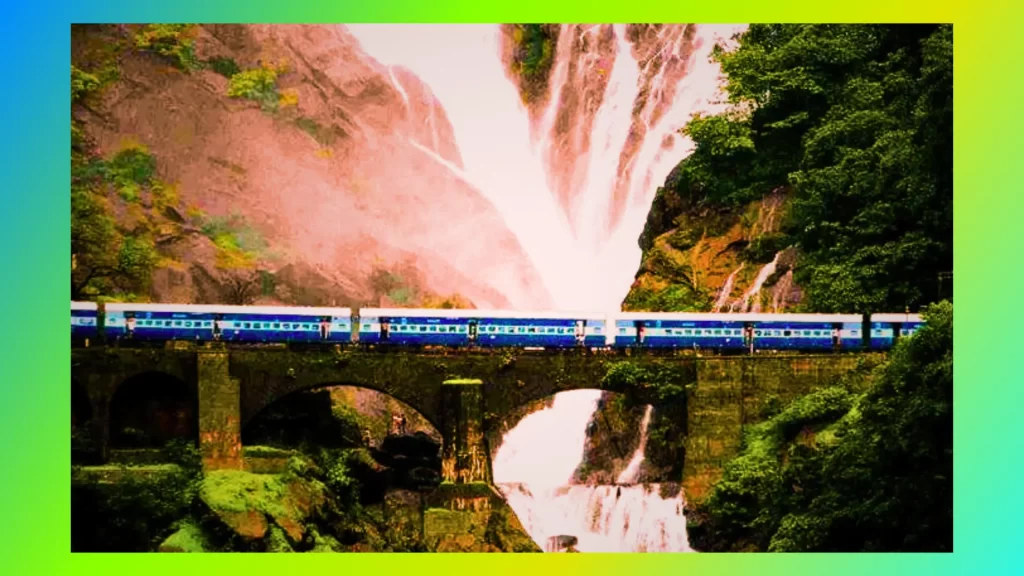
Rajasthan and Maharashtra boast many tourist spots as well as natural beauty spots that draw in travelers, with several of the top attractions found within each state:
Tourist Attractions in Rajasthan:
- Jaipur: Known as the “Pink City,” Jaipur is famous for its magnificent palaces like the City Palace, Hawa Mahal (Palace of Winds) and Amber Fort. The vibrant markets of Jaipur, such as Johari Bazaar and Bapu Bazaar, offer a unique shopping experience.
- Udaipur: Often referred to as the “Venice of the East,” Udaipur is renowned for its picturesque lakes, including Lake Pichola and Fateh Sagar Lake. The City Palace Complex, Jag Mandir Palace and the iconic Lake Palace are major attractions.
- Jaisalmer: Located in the heart of the Thar Desert, Jaisalmer is famous for its golden sandstone fortress, Jaisalmer Fort. The city also offers a chance to experience desert life with camel safaris and overnight stays in desert camps.
- Jodhpur: Dominated by the majestic Mehrangarh Fort, Jodhpur offers a glimpse into Rajasthan’s royal heritage. The city’s narrow alleys, blue-painted houses and bustling markets in the old town area add to its charm.
- Pushkar: Known for its sacred Pushkar Lake and the Brahma Temple, Pushkar attracts pilgrims and travelers alike. The town also hosts the vibrant Pushkar Camel Fair, a unique cultural event.
Tourist Attractions in Maharashtra:
- Mumbai: As the financial capital of India, Mumbai offers a mix of colonial architecture, bustling markets and iconic landmarks like the Gateway of India and Marine Drive. The city is also home to Bollywood, the Hindi film industry.
- Pune: Known for its educational institutions, Pune showcases a blend of historical sites and modern development. Places of interest include the Aga Khan Palace, Shaniwar Wada and the Osho Ashram.
- Ajanta and Ellora Caves: Located near Aurangabad, the Ajanta and Ellora Caves are UNESCO World Heritage Sites. These ancient rock-cut caves feature intricate sculptures and paintings, showcasing Buddhist, Hindu and Jain art.
- Mahabaleshwar: Nestled in the Western Ghats, Mahabaleshwar is a popular hill station known for its scenic beauty, strawberry farms and viewpoints like Arthur’s Seat and Wilson Point.
- Lonavala and Khandala: Located close to Mumbai and Pune, Lonavala and Khandala are picturesque hill stations offering lush green valleys, waterfalls and panoramic views from spots like Tiger Point and Bhushi Dam.
Natural Wonders:
- Ranthambore National Park (Rajasthan): Ranthambore National Park of Rajasthan, best-known for its large tiger populations, provides wildlife safaris that allow visitors to observe various species such as leopards, deer and birds.
- Keoladeo National Park (Rajasthan): Recognized as a World Heritage Site by UNESCO, Keoladeo National Park near Bharatpur offers birders from across the globe an oasis for watching migrants come home each winter.
- Western Ghats (Maharashtra): Maharashtra’s Western Ghats region has long been recognized by UNESCO for their rich diversity, lush forests and breathtaking landscape.
- Lonar Crater Lake (Maharashtra): Maharashtra is located in Buldhana district and created from meteorite impact by unique saline lake Lonar Crater is popular destination among nature enthusiasts as well as scientists alike.
Rajasthan and Maharashtra offer visitors many spectacular tourist spots and natural wonders for travelers to discover, thanks to its rich history, diverse landscapes and rich cultural legacy. Tourists flock there each year.
Comparison table of Rajasthan and Maharashtra
Here’s a comparison table highlighting key aspects of Rajasthan and Maharashtra:
| Aspect | Rajasthan | Maharashtra |
|---|---|---|
| Geographical Location | North-Western India | Western India |
| Capital | Jaipur | Mumbai |
| Area | 342,239 square kilometers | 307,713 square kilometers |
| Population | Approximately 79.6 million | Approximately 125.7 million |
| Major Language | Hindi | Marathi |
| Historical Significance | Rich Rajput heritage and history | Influenced by Maratha Empire |
| Economy | Tourism, agriculture, mining | Services, manufacturing, agriculture |
| Major Industries | Tourism, textiles, handicrafts | IT, finance, manufacturing, agriculture |
| Major Cities | Jaipur, Jodhpur, Udaipur | Mumbai, Pune, Nagpur, Nashik |
| Tourist Attractions | Amber Fort, Udaipur, Jaisalmer | Mumbai, Ajanta & Ellora Caves, Mahabaleshwar |
| Natural Wonders | Ranthambore National Park, Thar Desert | Western Ghats, Lonar Crater Lake |
| Political Structure | Multi-party system | Multi-party system |
| Administrative Structure | Districts, subdivisions, tehsils | Districts, subdivisions, tehsils |
| Political Influence | Moderate | High |
Conclusion
Rajasthan and Maharashtra stand as testaments to the incredible diversity and rich heritage that India has to offer. While Rajasthan mesmerizes with its regal past, magnificent palaces, and colorful traditions, Maharashtra thrives as a bustling hub of modernity intertwined with deep-rooted customs. Exploring these states is a journey of cultural immersion and appreciation for India’s timeless allure.

